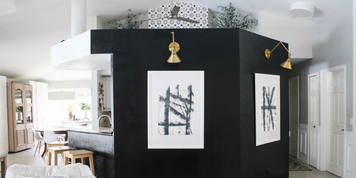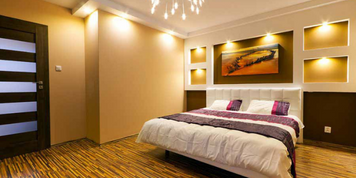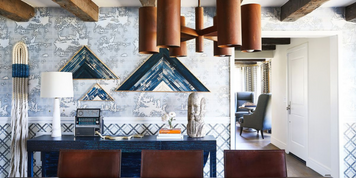Painting/Polishing and Wall Finishing Techniques
Brush Techniques:
- Use a brush to create smooth and even brushstrokes on the surface.
- Experiment with different brush sizes and types to achieve various textures and effects.
- Blend colors together by overlapping brushstrokes or using a dry brush technique.
- Create depth and dimension by adding layers of paint or using glazing techniques.
Roller Techniques:
- Rollers are ideal for larger surfaces and can create a smooth and consistent finish.
- Use a roller tray to evenly distribute paint and avoid excess dripping.
- Apply even pressure while rolling to avoid streaks or uneven coverage.
- Experiment with different roller textures, such as foam, nap, or mohair, for different effects.
Spray Techniques:
- Spray painting provides a smooth, even coat and is ideal for large areas or intricate details.
- Use a spray gun or aerosol cans for different scales of projects.
- Practice proper ventilation and safety precautions when using spray paint.
- Experiment with different nozzle sizes, distances, and angles for various textures and coverage.
Stenciling:
- Stencils can be used to create intricate designs or patterns on walls or furniture.
- Secure the stencil in place and use a brush, sponge, or roller to apply paint over the stencil.
- Carefully remove the stencil to reveal the design.
- Layer multiple stencils or use different colors for more complex designs.
Faux Finishes:
- Faux finishes replicate the appearance of other materials, such as marble, wood, or stone.
- Techniques like sponging, ragging, or dragging can create different textures and effects.
- Experiment with glazes, metallic paints, or textured mediums to achieve desired finishes.
- Practice on a sample board or small area before applying faux finishes to the entire surface.
Wallpapers:
- Choose from a wide variety of wallpapers with different patterns, textures, and colors.
- Properly measure and prepare the wall surface before applying wallpaper.
- Use wallpaper adhesive according to the manufacturer's instructions.
- Smooth out any air bubbles or wrinkles using a wallpaper brush or smoothing tool.
Polishing and Finishing:
- For wooden surfaces, sand the wood to remove imperfections and create a smooth base.
- Apply a wood stain or varnish to enhance the natural beauty of the wood.
- Use a soft cloth or brush to apply the polish or finish in the direction of the grain.
- Allow the polish or finish to dry completely before applying additional coats.
Remember to prepare the surface properly before painting, polishing, or applying finishes. Clean the surface, repair any cracks or holes, and apply a primer if necessary. Additionally, always follow safety guidelines and use appropriate protective equipment when working with paint, polish, or finishing products.








